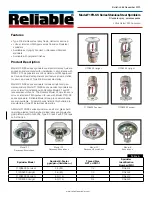
User's Guide Digiface AES
©
RME
57
24.5 The Control Strip
The Control Strip on the right side is a fixed element. It combines different functions that are either
required globally, or constantly used, and therefore should not be hidden in a menu. It can still be
hidden via the top menu Window
– Hide Control Strip.
The areas described in the following chapters can be minimized by a click on the arrow in their
title bar.
Device selection.
Select the unit to be controlled in case more than one is
installed on the computer.
FX - DSP Meter.
Shows the DSP load caused by activated EQ and Low Cut.
The DSP of the Digiface AES has been designed so that an overload cannot
occur. The display therefore is for information purposes only.
Undo / Redo.
With the unlimited Undo and Redo changes of the mix can be
undone and redone, at any time. Undo/Redo does not cover graphical changes
(window size, position, channels wide/narrow etc.), and also no changes to the
Presets. The accidental overwrite of an EQ Preset can not be made undone.
Undo/Redo also operates across Workspaces. Therefore a completely differ-
ently set up mixer view can be loaded via Workspace, and with a single click on
Undo the previous internal mixer state is returned
– but the new mixer view
stays.
Global Mute - Solo - Fader.
Mute.
Global Mute operates in a pre fader style, muting all currently activated routings of the
channel. As soon as any Mute button is pressed, the
Mute Master
button lights up in the Control
Strip area. With this button all selected mutes can be switched off and on again. One can com-
fortably set up a mute group or activate and deactivate several mute buttons simultaneously.
Solo.
As soon as any Solo button is pressed, the
Solo Master
button lights up in the Control Strip
area. With this button all selected Solos are switched off and on again. Solo operates as Solo-in-
Place, post fader style, as known from common mixing desks. A typical limitation for mixing desks,
Solo working only globally and only for the Main Out, does not exist in TotalMix. Solo is always
activated for the current submix only.
Fader.
A Shift-click on a fader adds the fader to the
temporary fader group
. All faders now
marked yellow are ganged, and move simultaneously in a relative way. The temporary fader group
is deleted by a click on the F symbol.
Содержание Digiface AES
Страница 7: ...User s Guide Digiface AES RME 7 User s Guide Digiface AES General...
Страница 13: ...User s Guide Digiface AES RME 13 5 4 Overview Menu Structure...
Страница 15: ...User s Guide Digiface AES RME 15 User s Guide Digiface AES Installation and Operation Windows...
Страница 29: ...User s Guide Digiface AES RME 29 User s Guide Digiface AES Installation and Operation Mac OS X...
Страница 37: ...User s Guide Digiface AES RME 37 User s Guide Digiface AES Inputs and Outputs...
Страница 42: ...42 User s Guide Digiface AES RME...
Страница 43: ...User s Guide Digiface AES RME 43 User s Guide Digiface AES Stand Alone Operation...
Страница 46: ...46 User s Guide Digiface AES RME...
Страница 47: ...User s Guide Digiface AES RME 47 User s Guide Digiface AES TotalMix FX...
Страница 49: ...User s Guide Digiface AES RME 49...
Страница 82: ...82 User s Guide Digiface AES RME...
Страница 83: ...User s Guide Digiface AES RME 83 User s Guide Digiface AES Class Compliant Mode...
Страница 89: ...User s Guide Digiface AES RME 89 User s Guide Digiface AES Technical Reference...
Страница 98: ...98 User s Guide Digiface AES RME 39 Diagrams 39 1 Block Diagram Digiface AES...
Страница 100: ...100 User s Guide Digiface AES RME...
Страница 101: ...User s Guide Digiface AES RME 101 User s Guide Digiface AES Miscellaneous...
















































